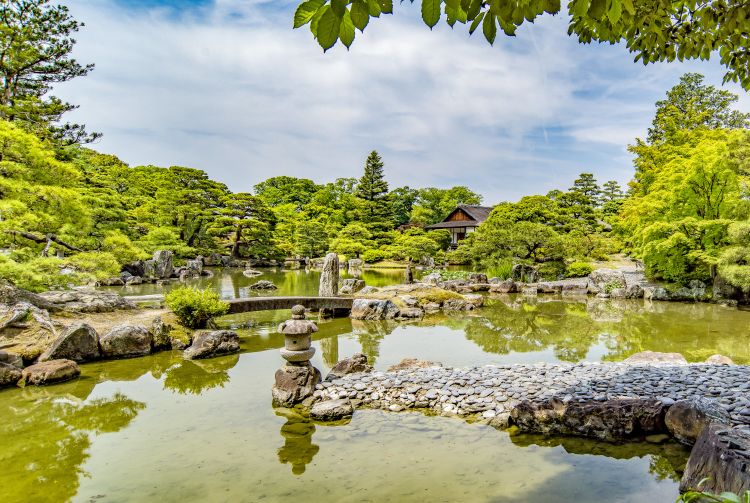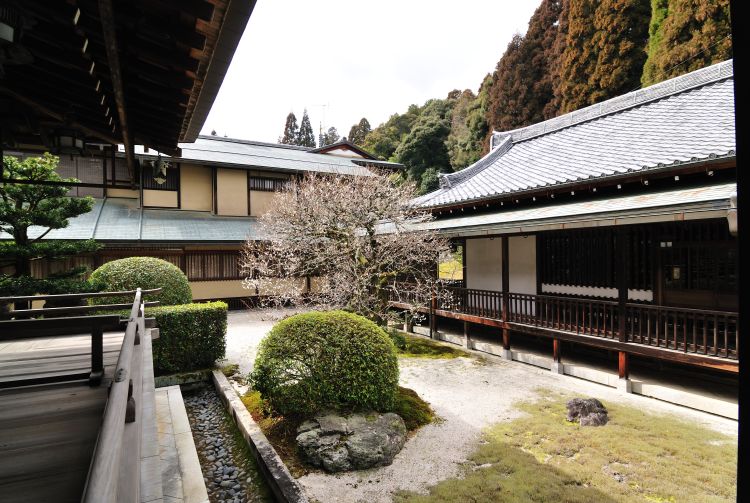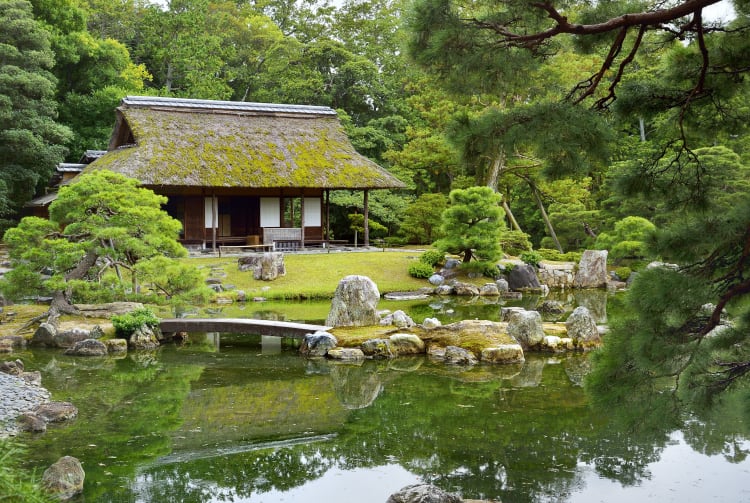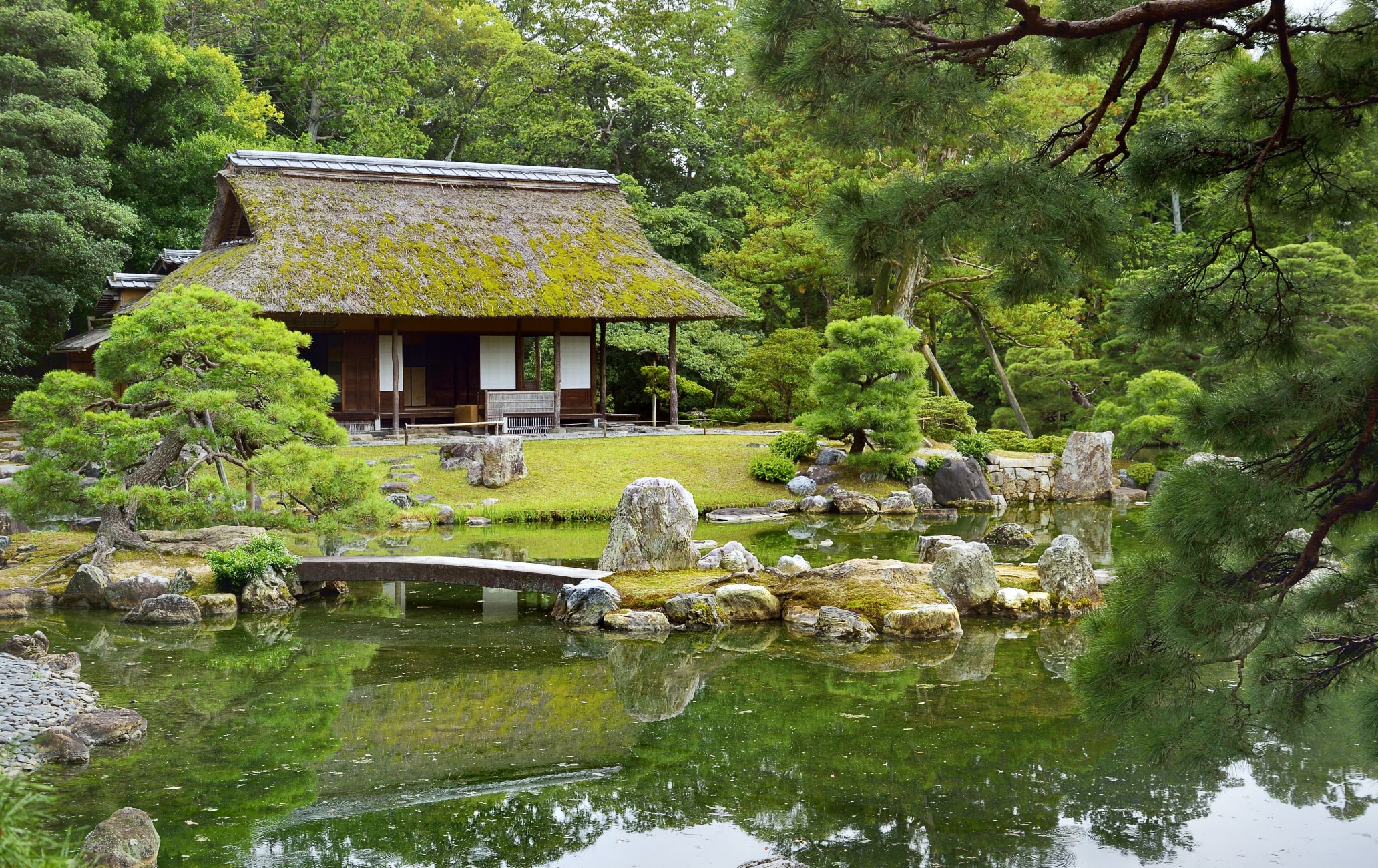An Imperial villa, fine teahouses, moss gardens and a shrine to the patron deity of sake
The term “Rakusei” means western Kyoto, namely the Arashiyama and Sagano areas . This area, nestled against the mountains, was a popular location for the villas of nobility during the Heian period (794-1185), and is now a popular sightseeing destination.
Rakusei is demarcated by the Katsura River, which gently winds around the old temples dotting the river's west bank.
Don't Miss
- Katsurarikyu Imperial Villa, with Japan's most famous garden
- Drinking a toast to the popular deity of sake
- Taking a leisurely stroll along the Katsuragawa

How to Get There
Rakusei is accessed by the private Hankyu Railway from various locations in Kyoto. From JR Kyoto Station , you will have to transfer to the Hankyu Kyoto Main Line via the Keifuku Electric Railroad, Keihan Main Line, or Kyoto Municipal Subway.
Katsurarikyu is a 15-minute walk from Katsura Station on the Hankyu Line. Other sites in Rakusei can be best reached from either Matsuo-Taisha or Kami-Katsura Stations on the Hankyu Arashiyama Line.
Quick Facts
Most sites in Rakusei are a short walk from one another
This quiet section of Kyoto sees somewhat fewer tourists
The hills above the sites are awash with color during autumn
Considered by many to be Japan's best garden
Perhaps Rakusei's best-known gem is the Katsura-rikyu Imperial Villa , celebrated by architects and gardeners around the world. Built on the western side of the Katsuragawa River in the early 17th century, it served as a villa for the Imperial Family.
Katsura-rikyu took 35 years to complete. Its main structure is a “shoin” (study room) that consists of three buildings known as the Koshoin, Chushoin and Shingoten. The original buildings stand beside a strolling garden that includes seven tearooms. The main palace buildings are not open to the public, but the teahouses and gardens are.

Since the Imperial Household Agency maintains the villa, you will need permission to visit it. You need to register online at least three days in advance. Same-day applications are accepted at Katsura, but reservations are closed as soon as tours are filled.
Visitors are guided around the villa, with the tour taking around an hour. Audio guidance in English, Chinese, French, Korean and Spanish is available free.
Worshipping the patron deity of sake
There are many shrines and temples in the Katsura area. The god of sake (rice wine) brewing, honored at the Matsuo Taisha shrine, attracts many worshippers.
The shrine was founded in the 8th century by the powerful Hata clan who brought the technology of sake brewing over from the Asian mainland. The shrine's most renowned feature is its garden, the final work of renowned garden designer Mirei Shigemori.
Ringing out the principles of Buddhism
Nearby Kegon-ji Temple is popularly known as Suzumushi-dera, for its “suzumushi” (bell crickets) that have been taught to chirp all year round. Typically, an autumn insect with a short life span, the sound of the crickets serves as a Buddhist parable teaching the visitor to live their life to the fullest. A visit to the temple includes a brief Buddhist sermon and a refreshing cup of green tea.




The quiet, uncrowded environment of Rakusei provides a welcome refuge for weary tourists. Plan on taking a whole morning or afternoon to walk through the area.


























































